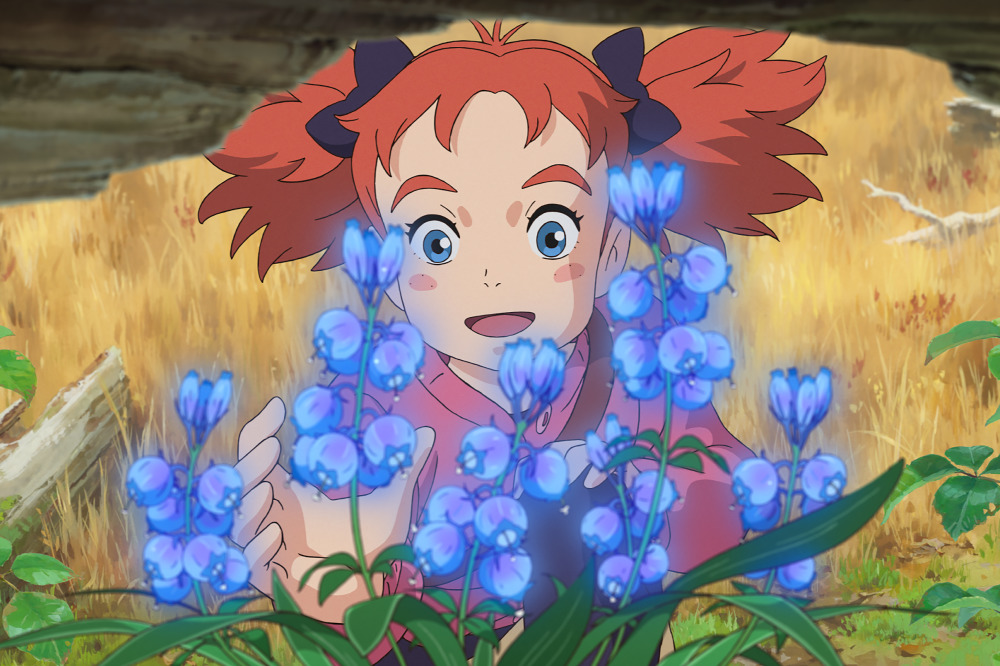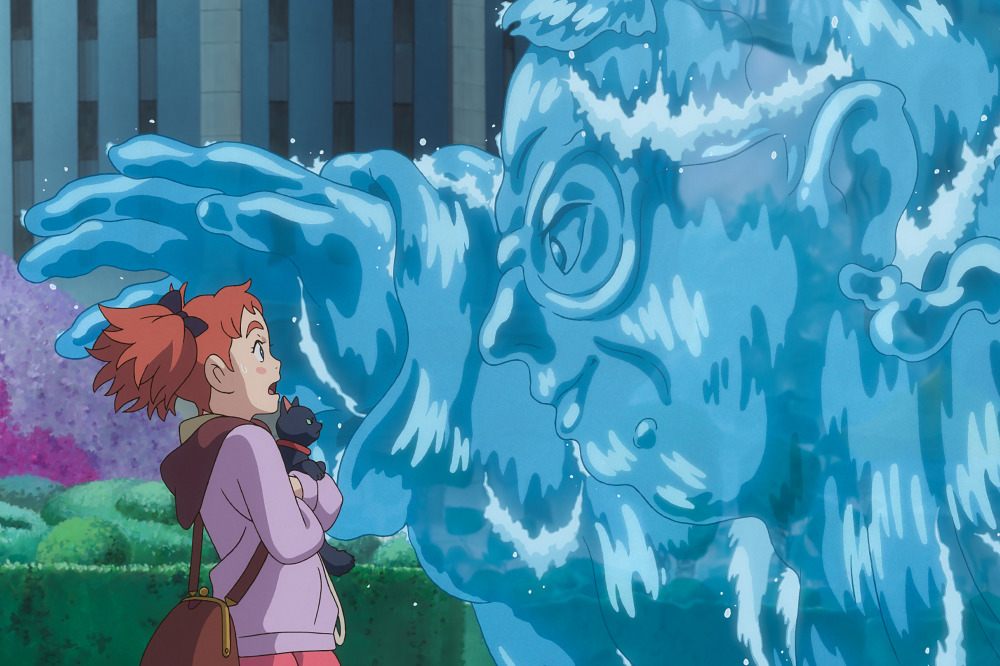Mary and the Witch’s Flower is the debut feature from Studio Ponoc, by veterans of Studio Ghibli, Hiromasa Yonebayashi and Hiromasa Yonebayashi. Branching away from Studio Ghibli, Yonebayashi and Nishimura have established a new era of Japanese animation, whilst maintaining the visual charm and enchanting narrative of Studio Ghibli. In celebration of the home entertainment release of Mary and the Witch’s Flower today, we take a comparative look at some classic animations derived from Japanese animation…

Mary and the Witch's Flower is out now
Mary and the Witch’s Flower is adapted from The Little Broomstick, written by British children’s author Mary Stewart. In this story, suitably named Mary lives in England, artistically styled to suit a 1970s British countryside theme. Mary is staying with her great Aunt Charlotte over the summer and becomes increasingly bored and down as she feels unhelpful with chores due to her clumsy nature. She regards herself as useless and feels self-conscious about her image, focusing especially on her flowing red hair that she attempts to hide with black ribbon to be more inconspicuous, but to no avail; as she is teased by local boy Peter for looking different.
One day when she is playing in the woods, a black cat causes Mary to be distracted and she is led astray deep into the woods, where she blunders upon a mysterious and magical flower. What happens throughout the story shapes not only her perceptions of herself, but how she views the world around her and how she wants to personally shape it. During her adventure to Endor College, Mary discovers dark secrets and awry experiments with artificial magical machines that imprison animals. This is an indication to the dangers in the real world to the irresponsible actions of egocentric scientific advancement. When her new-found friend Tib the black cat is put in danger, Mary must realise her true purpose and summon all her courage to save her friends and return home. It is important to point out that amid this wickedness of the antagonists that Mary meets at Endor College, they are never portrayed as evil but merely as erroneously pursuing misguided intentions, which is imperative when considering the young audience that will soak this film up.
When we are introduced to Endor College, it is hard not to make comparisons between Mary and Chihiro’s journey from Spirited Away, one of the most popular and breathtaking films from Studio Ghibli Director Miyazaki. In this story, Chihiro mainly inhabits Yubaba’s bathhouse, an imposing maze filled with eccentric characters and multiple levels of mysteries and hazard. Chihiro’s exciting, perilous journey into the unknown leads her to discover inspiration and a self-assuredness that she otherwise may have never encountered in her normal life. The animators behind Studio Ghibli have always been masters of creating the perfect otherworldly environments, full of monsters and spirits, that immerse the character and audience into another realm of imagination and thought that shapes the journey of the character and allows the audience to grow alongside them. Miyozaki also directed the film Kiki’s Delivery Service, which shares similar converging themes around young heroines overcoming their original struggle with finding courage in a puzzling world of insecurity and self-discovery.

Outside of the renowned Ghibli influences, a comparable coming of age film is Children Who Chase Lost Voices in 2011 by Japanese director and writer Makoto Shinkai. The film stars a young female lead protagonist Asuna living in the countryside that finds an artefact left by her father that takes on a perilous journey into an unknown world. Straight away comparisons to the rural setting of the film, which promotes strong themes of environmentalism, composed with background art that produces childhood feelings of fantastical nostalgia.
Another film from a studio outside of Ghibli’s umbrella of influence is Little Witch’s Academia, which has a lot of links to Mary and the Witch’s Flower. The main character, Atsuko, also encounters magical skills when she enrolls in an academy and encounters a magical relic that helps her get past her original insecurities and fallibility in her abilities as she navigates through the unforgiving world and attempts to restore the balance of magic to the world.
Amongst this beautiful array of films, Mary and the Witch’s Flower shines as a story that unambiguously teaches the audience not to abuse the power that is entrusted to you, not to abandon those you care about, and about the importance of home and the environment. It is a heartfelt coming of age story a for young girls, teaching that you shouldn’t change yourself just because you are different, and to embrace every unique quality you own. This is evident as we witness Mary coming home after losing her magical aura that was gifted to her by the witch’s flower, and instead she must use her new learned resourcefulness and originality. She embraces her new-found confidence and faith in herself, represented by a magical scene of her own creation; she loosens the hefty black ribbons from her hair and lets her fiery red locks flick through the air. These subtle nuances occur throughout the film coupled with a distinctive hand drawn animation that harnesses both classic and modern techniques, together with a soundtrack that is fluid and enchanting, Mary and the Witch’s Flower is truly spellbinding.
MARY AND THE WITCH’S FLOWER IS AVAILABLE ON DIGITAL, BLU-RAY, DVD & SPECIAL EDITION BLU-RAY STEELBOOK NOW.
Tagged in Japan

